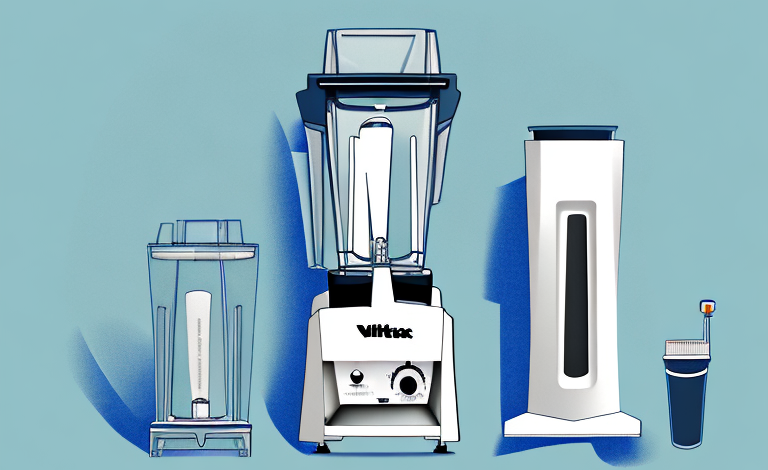Fingerprints have been used for identification purposes for more than a century now, and the science behind this technique is continuously evolving. The process of lifting a fingerprint is a crucial step in forensic investigations, and it requires precision, attention to detail, and the right tools.
The basics of fingerprint lifting and usage
Fingerprints are unique patterns on the skin of our fingertips, and they leave a trace whenever we touch something, making them an excellent source of forensic evidence. The goal of lifting a fingerprint is to create a replica of the pattern left behind, which can be analyzed and compared to other prints to identify an individual.
There are several methods for lifting fingerprints, including dusting with powder, using adhesive tape, and applying chemicals. Each method has its advantages and disadvantages, and the choice of method depends on the surface the print is on and the condition of the print. Once the print is lifted, it can be analyzed using various techniques, such as comparison with known prints, computerized databases, and chemical analysis for the presence of drugs or other substances.
Types of fingerprints: loop, whorl, and arch
There are three primary types of fingerprint patterns: loops, whorls, and arches. Loops form when the ridge lines on a fingerprint make a backward turn and exit the pattern on the same side they entered. Whorls, on the other hand, form when the ridges make at least one complete circle. Arches are the rarest type of fingerprint and are characterized by a pattern that starts on one side of the pattern and exits on the other side without making any backward turns.
Fingerprints are unique to each individual and can be used for identification purposes. The patterns of loops, whorls, and arches are determined by genetics and are formed during fetal development. While fingerprints are commonly associated with criminal investigations, they are also used in other fields such as forensics, biometrics, and even in unlocking smartphones and other devices.
Understanding the science behind fingerprint analysis
Every individual’s fingerprint pattern is unique, and this is because of the lack of uniformity in the ridge lines and the minutiae (the ridge endings, bifurcations, and enclosures). The science of fingerprint analysis involves examining and comparing the ridge patterns and minutiae of two or more fingerprints to establish their similarities or differences.
Fingerprint analysis has been used as a method of identification for over a century, and it has proven to be a reliable and accurate technique. However, it is not foolproof, and errors can occur due to factors such as poor quality prints, human error, or intentional tampering.
Advancements in technology have led to the development of automated fingerprint identification systems (AFIS), which use algorithms to compare and match fingerprints. AFIS has greatly improved the speed and accuracy of fingerprint analysis, making it an essential tool in law enforcement and forensic investigations.
The process of collecting a fingerprint sample
The process of collecting a fingerprint sample depends on the surface on which the print is found. For instance, a fingerprint on paper can be lifted using tape, while a fingerprint on a non-porous surface such as glass can be lifted using a latent print powder and a lifting tape. The collection process must be carried out carefully to avoid destroying the print and to ensure that the lifted print is of good quality.
Another important factor to consider when collecting a fingerprint sample is the age of the print. Fresh prints are easier to collect and provide better quality results compared to older prints. In some cases, older prints may require additional processing to enhance the visibility of the print before it can be lifted.
It is also important to note that not all surfaces are suitable for collecting fingerprints. Surfaces that are too rough or porous may not provide a clear print, while surfaces that are too smooth may not hold the print at all. In such cases, alternative methods such as chemical development or electrostatic detection may be used to collect the print.
Tools required for lifting fingerprints
The tools required for lifting fingerprints include latent print powders, brushes, lifting tape, lifting pads, fingerprint ink pads, fingerprint cards, and magnifying glasses. The choice of tool will depend on the surface on which the fingerprint was found and the objectives of the investigation.
It is important to note that the use of these tools requires specialized training and expertise. Improper use of the tools can damage or destroy the fingerprint evidence, rendering it useless in the investigation. Additionally, the collection and handling of fingerprint evidence must adhere to strict protocols to ensure its admissibility in court.
Common mistakes to avoid while lifting fingerprints
One common mistake to avoid when lifting fingerprints is using too much pressure when applying the latent print powder, as this can obscure the minutiae on the print. Another mistake is using a rough surface to lift the print, which can cause smudging and loss of detail.
It is also important to avoid touching the print with bare hands, as this can transfer oils and other substances onto the print, making it more difficult to analyze. Additionally, using too much tape or adhesive when lifting the print can damage the print or cause it to tear. It is important to use a gentle touch and the appropriate tools when lifting fingerprints to ensure the best possible results.
Techniques for lifting fingerprints from different surfaces
There are different techniques for lifting fingerprints from different surfaces. For instance, when lifting a print from a porous surface such as paper, one can use adhesive lifting tapes, which are designed to stick to the print and lift it without causing any damage. On non-porous surfaces, a latent print powder can be applied using a brush and then lifted using special lifting tapes.
Another technique for lifting fingerprints from metal surfaces is the use of a superglue fuming method. This involves heating superglue in a container, which releases fumes that adhere to the print and make it visible. The print can then be lifted using a lifting tape. Additionally, on rough surfaces such as wood or textured plastics, a vacuum metal deposition technique can be used. This involves coating the surface with a thin layer of metal, which adheres to the print and makes it visible for lifting.
How to preserve and store lifted fingerprints for future use?
After lifting a fingerprint, it is essential to preserve and store it properly to prevent contamination or damage. The lifted print can be placed on a fingerprint card and sealed using a clear adhesive tape. The fingerprint card should be stored in a dry, cool, and dark environment to avoid deterioration over time.
Another method of preserving lifted fingerprints is to use a cyanoacrylate fuming technique. This technique involves exposing the lifted print to cyanoacrylate vapors, which react with the moisture in the print to create a hard, durable surface. The print can then be photographed or scanned for future use.
It is important to note that lifted fingerprints should be handled with care to avoid smudging or damaging the print. Gloves should be worn when handling the print, and any tools used should be clean and free of debris. Additionally, it is recommended to document the chain of custody for the lifted print to ensure its admissibility in court proceedings.
Applications of fingerprint analysis in solving crimes
Fingerprint analysis is widely used in solving crimes, and it has helped to exonerate innocent people and convict guilty ones. Fingerprint analysis is used in criminal investigations, identifying missing persons, and providing background checks for employment purposes.
In addition to its use in criminal investigations and identifying missing persons, fingerprint analysis is also used in immigration and border control. Fingerprinting is a key component of the biometric identification process used to verify the identity of individuals entering or leaving a country. This technology has helped to prevent illegal immigration and identify individuals who may pose a security threat.
The future of fingerprint analysis technology
The technology used in fingerprint analysis is evolving, and there are ongoing efforts to develop new techniques and tools to improve the speed and accuracy of the analysis. Some of the new technologies being developed include 3D printing of fingerprints to create more precise replicas for analysis and the use of advanced software to analyze complex fingerprint patterns.
In addition to these advancements, researchers are also exploring the use of artificial intelligence (AI) in fingerprint analysis. AI algorithms can quickly analyze large amounts of data and identify patterns that may be missed by human analysts. This technology has the potential to greatly improve the efficiency and accuracy of fingerprint analysis, leading to faster and more reliable identification of suspects in criminal investigations.
Ethical considerations in using lifted fingerprints
The use of lifted fingerprints for identification purposes raises ethical and privacy concerns, and there are regulations in place to govern their use. The use of fingerprints in criminal investigations must follow the due process, and individuals must provide their consent before their fingerprints are collected and stored.
One of the ethical concerns with using lifted fingerprints is the potential for false positives. If a fingerprint is lifted from a crime scene and matched to an innocent person, it could lead to wrongful accusations and convictions. It is important for law enforcement to use lifted fingerprints as just one piece of evidence and not rely solely on them for identification.
Another ethical consideration is the potential for misuse of lifted fingerprints. If fingerprints are collected and stored without proper security measures in place, they could be accessed by unauthorized individuals and used for nefarious purposes. It is crucial for organizations that collect and store fingerprints to have strict security protocols in place to protect individuals’ privacy and prevent misuse.
Real-life examples of how lifted fingerprints have helped solve crimes
Over the years, fingerprint analysis has been used to solve countless crimes, including murders, burglaries, and robberies. For instance, in 1968, a man named Richard Edward Hickock was convicted of murdering a family of four in Kansas, thanks to a fingerprint found on a radio left at the crime scene.
In another case, a man named Brandon Mayfield was wrongly accused of involvement in the 2004 Madrid train bombings due to a fingerprint match. However, it was later discovered that the match was a mistake and Mayfield was released.
Fingerprint analysis has also been used to identify victims of natural disasters and accidents. In 2004, after the Indian Ocean tsunami, Thai authorities used fingerprint analysis to identify victims and reunite them with their families.
The limitations of using lifted fingerprints for identification purposes
While fingerprint analysis is a powerful tool for identification, it is not infallible, and there are limitations to its use. Fingerprint patterns can be altered due to age, injury, or environmental factors which can make identification challenging.
The role of fingerprint analysis in forensic investigations
Overall, fingerprint analysis plays a critical role in forensic investigations, and it is a powerful tool for identifying individuals, solving crimes, and bringing justice to victims. The art and science of lifting and analyzing fingerprints have come a long way, and we can expect even more advancements in this field in the future.



